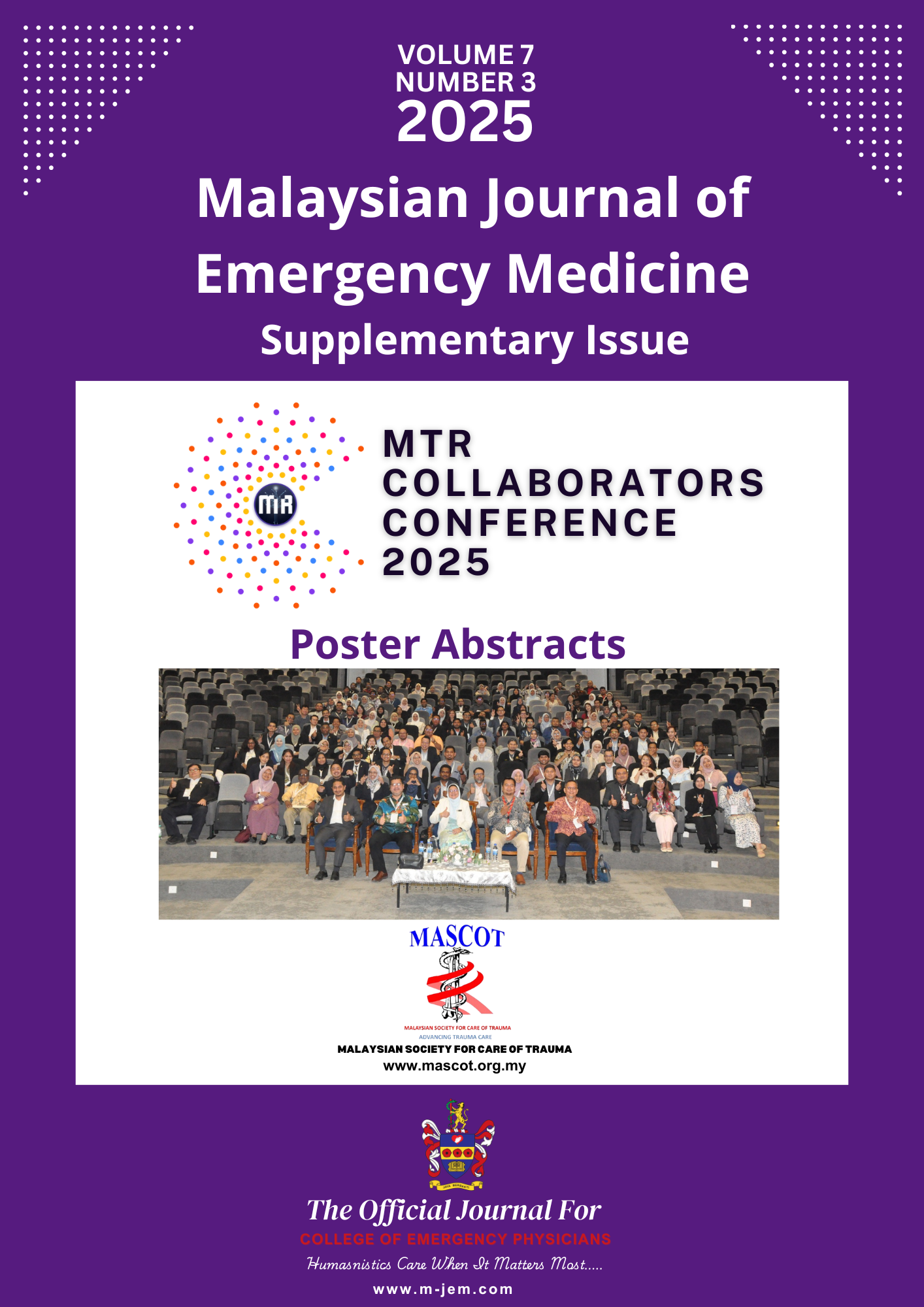A05 Evaluation of Trauma Activation Using Injury Severity Score
Main Article Content
Abstract
INTRODUCTION
Trauma activation protocols in emergency departments have become standard practice in many hospitals. This study aims to evaluate the appropriateness and outcomes of trauma activation at Hospital Tengku Ampuan Afzan (HTAA), Kuantan, using the Injury Severity Score (ISS) as an objective measure.
METHODS
This retrospective study included trauma patients triaged to the resuscitation zone at HTAA from January to October 2023. Data were extracted from the Malaysia Trauma Registry (MTR). 126 patients with complete ISS data were included. Patients were categorized based on trauma activation status (activated vs. not activated) and ISS severity (>12 vs. ≤12). Sensitivity, specificity, positive predictive value (PPV), and negative predictive value (NPV) were calculated to evaluate the protocol's performance in identifying major trauma (ISS >12). Statistical significance was assessed using the Chi-square test via Python 3.10.
RESULTS
Among the 126 patients, 68 (58.0%) were in the trauma activation group with ISS >12, 15 (11.9%) in the non-activation group with ISS >12, 40 (31.3%) in the non-activation group with ISS ≤12, and 3 (2.4%) in the activation group with ISS ≤12. The trauma activation protocol demonstrated a sensitivity of 63.0%, specificity of 16.7%, PPV of 81.9%, and NPV of 7.0%. The Chi-square analysis yielded a value of 2.848 corresponding to a p-value of 0.091, indicating no statistically significant association between trauma activation and ISS severity (p > 0.05).
DISCUSSION
The majority of patients with major trauma (ISS >12) were appropriately identified by the trauma activation protocol, suggesting reasonable clinical judgment. However, the lack of statistical significance and low specificity highlight the potential for inaccurate activation
CONCLUSION AND IMPLICATIONS
The ISS is a valuable tool for retrospective evaluation of trauma activation protocols. While HTAA's current trauma activation shows decent performance in identifying severe trauma, further refinement and larger studies are necessary to enhance its accuracy.
Metrics
Article Details

This work is licensed under a Creative Commons Attribution-NonCommercial 4.0 International License.

